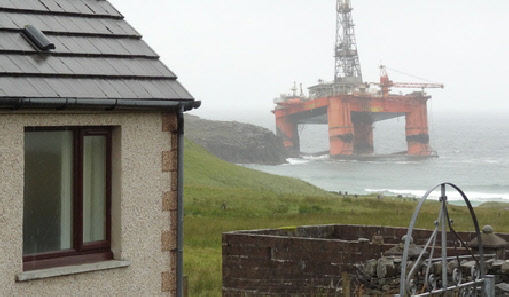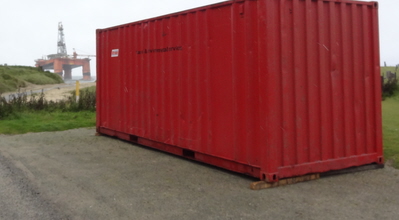Fuel from the oil rig aground at Lewis has spilled into the sea.
The Transocean Winner ruptured two of her four fuel tanks after crashing into rocks by Dalmore beach on Monday.
Another tank is intact while the fourth was inaccessible to inspectors.
An unknown proportion of 280 tonnes of fuel is assumed to have poured out from the tanks containing diesel for the rig’s onboard power supply.
All water ballast tanks have also been breached.
Hugh Shaw, Secretary of State's Representative for Maritime Salvage and Intervention, said a team of six salvors believe “air is blowing through two of the tanks."
“At this stage it is difficult to say how much (diesel) is still trapped in there or has it all gone,” he added.
“We can’t give figures but we know there is damage there.”
Salvors are assuming the worst case scenario that diesel from the two damaged tanks has leaked, he said.
An emergency planning spokesman said: "The preliminary visit onto the rig yesterday afternoon revealed some evidence that a number of the diesel storage tanks on the rig may have been breached and that is likely the cause of the low level of pollution detected on Monday afternoon."
Environment Secretary Roseanna Cunningham said: “We continue to closely monitor this ongoing situation and the response that is being coordinated by the UK Government, which has responsibility for managing such incidents.
“The news that some of the fuel tanks appear to have breached is obviously concerning, especially given the proximity of the grounded rig to the beach and the presence in the wider area of important marine habitats and species.
"Although the diesel is expected to rapidly disperse in the current sea conditions, the Environment Group, which is chaired by Marine Scotland, has put in place measures to swiftly identify any potential environmental impact on this precious and fragile marine habitat.
“This whole incident raises serious questions about why this rig was being towed through Scottish waters when such stormy conditions were forecast, and the deputy first minister has been in direct contact with the UK Government about this very point.”
Samples of soil and seawater are being tested for pollution.
Counter pollution equipment has been transferred onto the beach by truck.
Monitoring found no trace of a slick on Wednesday though there were reports of oil in the water on the previous two days.
The 33-
The tug MV Alp Forward failed to make headway in the strong wind and the tow was overpowered by the weather.
A temporary exclusion zone of 300 metres has been implemented around the rig to prevent boats from coming too close.
Four large offshore tugs have been requisitioned for the incident. The MV Union Bear and Olympic Orion are in Stornoway awaiting salvors' instructions. Coastguard tug Herakles is presently standing off Dalmore. Also available is the rig’s towing vessel, Alp Forward.
Fuel spill from grounded oilrig
10 August 2016


Stornoway coastguard helicopter winched a damage assessment team from Smit Salvage and Transocean on board the rig on Monday to carry out a series of initial inspections.
They spent three and a half hours yesterday checking the condition of the Transocean Winner, looking at its structural integrity.
A lack of wind on Wednesday halted plans to fly a larger group to the rig.
Salvage company Smit is considering charting a private helicopter to airlift personnel onboard the stricken structure in order to draw up a removal plan.
This would avoid downtime if the coastguard helicopter was despatched to an emergency.
A container of equipment to tackle any pollution has been taken to the scene